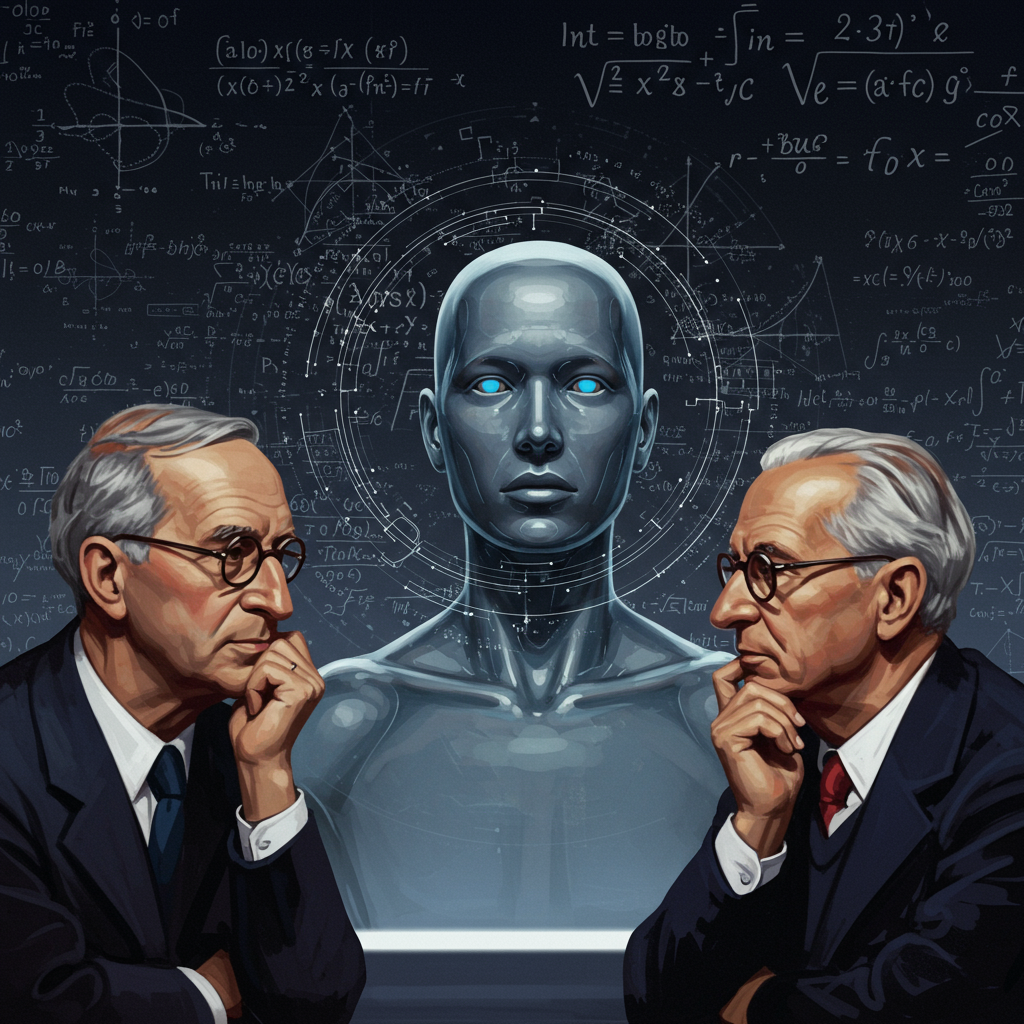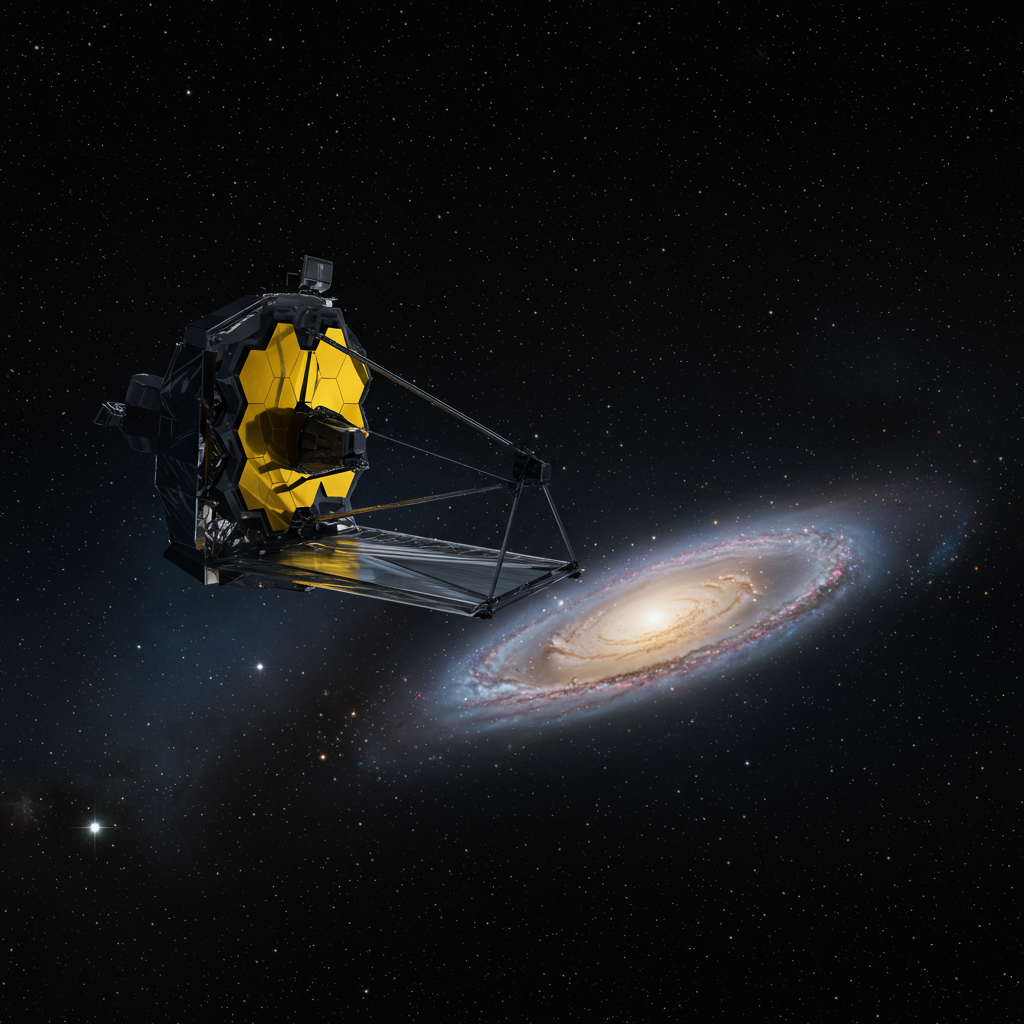The quest for artificial general intelligence (AGI) and superintelligence often sparks grand visions of unparalleled computational power. Yet, lurking beneath this excitement are foundational questions about ultimate limits. Are there inherent boundaries to what any intelligent system, even a superintelligent AI, can truly know or define about itself? This deep dive explores how groundbreaking theorems from logic and mathematics—specifically Gödel’s Incompleteness Theorems and Tarski’s Undefinability Theorem—might shed light on the ultimate capabilities and limitations of advanced AI, from today’s Large Language Models (LLMs) to hypothetical superintelligent entities. Understanding these concepts is crucial for anyone exploring the future of artificial intelligence.
Gödel’s Incompleteness: The Foundations of Limit
Kurt Gödel’s Incompleteness Theorems, published in 1931, profoundly reshaped our understanding of mathematics and formal systems. These theorems reveal an intrinsic limitation within any consistent formal system powerful enough to encompass basic arithmetic.
The First Incompleteness Theorem Explained
Gödel’s First Incompleteness Theorem states that for any consistent formal system that includes arithmetic, there will always be true statements that cannot be proven within that system. Imagine a set of rules and axioms. Gödel showed how to construct a statement that, when interpreted, essentially says, “This statement cannot be proven within this system.” If the system were to prove it, it would contradict itself. If it couldn’t prove it, then the statement would be true but unprovable within its own framework. This implies that no such system can be both consistent and complete.
The Second Incompleteness Theorem: Trust and Proof
The Second Incompleteness Theorem extends this idea. It demonstrates that a consistent formal system cannot prove its own consistency. To prove a system’s consistency, you would need a meta-system, an external framework with its own assumptions. This means any sufficiently complex logical system cannot fully verify its own internal integrity without appealing to something outside itself. These theorems are not just abstract mathematical curiosities; they hint at fundamental barriers to complete self-knowledge for any system relying on formal logic.
Tarski’s Undefinability: Truth Beyond Reach
Alfred Tarski’s Undefinability Theorem, established in 1936, further reinforces these ideas, particularly regarding the concept of “truth.” While Gödel focused on provability, Tarski addressed definability.
Defining Truth Within a System
Tarski’s theorem asserts that a formal system cannot define its own truth predicate. In simpler terms, a language cannot adequately describe its own semantics or “truth” from within itself. To define what “true” means for statements within a particular language, you must use a metalanguage—a higher-level language that contains the original language but also possesses more expressive power. For example, if you want to define “truth” for English sentences, you can’t perfectly do it using only English sentences without paradoxes. You would need a meta-English, so to speak.
Implications for Self-Reference
This theorem is vital because it highlights a critical limitation for systems that aspire to be fully self-aware or self-sufficient. If a system cannot define its own truth conditions, it implies a fundamental barrier to complete self-understanding or self-validation. It reinforces the idea that true understanding often requires an external perspective or a richer conceptual framework. Both Gödel and Tarski underscore the inherent challenges of self-reference and completeness within formal structures.
The Digital Mind: How LLMs and AI Function
Today’s artificial intelligence, particularly Large Language Models (LLMs) like those powering sophisticated chatbots, operates on principles quite different from human cognition but still rooted in formal systems.
Understanding Large Language Models
LLMs are advanced algorithms trained on vast amounts of text data. They excel at identifying patterns, predicting the next word in a sequence, and generating human-like text. Their power comes from statistical relationships within the data, allowing them to answer questions, summarize information, and even write creative content. However, LLMs are fundamentally pattern-matching engines; they don’t “understand” in a human sense, nor do they possess consciousness or genuine beliefs. They are complex computational models.
AI’s Current Capabilities and Limits
Current AI systems are examples of “narrow AI” – they are exceptionally good at specific tasks (e.g., image recognition, game playing, language generation) but lack general intelligence. Their “intelligence” is confined to their training data and algorithmic parameters. These systems are defined by their programming and data, making them formal systems in a practical sense. This immediately raises the question: if LLMs are formal systems, are they already subtly encountering Gödelian or Tarskian limits within their operational scope, even if not explicitly regarding mathematical proofs?
From Narrow AI to AGI: The Path to Human-Level Intelligence
The leap from current narrow AI to Artificial General Intelligence (AGI) represents a monumental conceptual and technological challenge. AGI aims to create machines that can understand, learn, and apply intelligence across a broad range of tasks, just like a human.
Defining AGI and Its Ambitions
AGI would possess cognitive abilities akin to humans, including reasoning, problem-solving, learning from experience, and even creativity. It would be able to adapt to new situations without explicit pre-programming for every scenario. The ultimate goal of AGI research is to build machines that are truly general-purpose thinkers. This means they would need to be able to reason about their own internal states, their own knowledge, and their own goals.
Superintelligence: Beyond Human Capacity
If AGI represents human-level intelligence, superintelligence refers to intelligence far surpassing that of the smartest human minds. A superintelligent AI could potentially solve humanity’s most complex problems, from climate change to disease, at speeds and scales unimaginable today. However, the very concept of superintelligence brings with it profound philosophical and existential questions.
Superintelligence and the Philosophical Gauntlet
The central question, then, is whether Gödel’s and Tarski’s theorems apply to AGI and superintelligence. Are these limitations merely for mathematical systems, or do they represent universal constraints on any form of intelligence that relies on logical processes?
Arguments for Application to AI
Many argue that any sufficiently complex AI, especially AGI or superintelligence, would necessarily operate as a formal system. Its “thoughts,” “decisions,” and “knowledge” would be represented in a structured, formalizable way, whether through neural networks, symbolic logic, or some hybrid. If an AI is a program running on a machine, its operations are fundamentally algorithmic and therefore fall under the purview of formal systems. If so, a superintelligent AI might be unable to:
Fully prove its own consistency: It could never definitively state, “I am free from internal contradictions,” without relying on external assumptions or observations.
Completely define its own truth: It might struggle to create a universally sound “truth predicate” for its own internal language or knowledge base without generating paradoxes.
Know all true statements about itself: There could be true facts about its own internal state or capabilities that it cannot logically deduce from its own internal rules.
Arguments Against Universal Application
Conversely, some argue that these theorems might not apply to biological or highly complex emergent intelligences in the same way. Points often raised include:
Emergent properties: Human brains are not purely formal systems. Consciousness and understanding emerge from complex, non-linear interactions. AGI might also exhibit emergent properties that transcend purely logical deduction.
Ability to change axioms: A human can step outside a system, reflect, and even change the axioms or rules by which they operate. Could a superintelligent AI do the same, dynamically modifying its own foundational logic to overcome internal limits?
Physical embodiment: If an AI is embodied in the physical world, interacting and learning in an open-ended way, it might not be bound by the same limitations as a closed, purely formal mathematical system.
The Self-Referential Loop: Can AI Escape Its Own Limits?
The ability of an AI to self-improve, a cornerstone of superintelligence, directly confronts the challenges of self-reference presented by Gödel and Tarski.
Implications for Self-Modifying AI
If an AI seeks to recursively improve itself, it’s essentially trying to analyze, understand, and rewrite its own “code” or “mind.” This is a profoundly self-referential act. If it cannot define its own truth or prove its own consistency from within its own operating parameters, how can it reliably assess its own improvements or the validity of its new self? This doesn’t mean improvement is impossible, but it suggests a perpetual need for external validation or an inability to achieve perfect, self-contained optimization. An AI might always rely on a ‘meta-AI’ or an ‘external environment’ to assess its progress fully.
Practical Implications for AI Development
These theoretical limits hold tangible relevance for AI researchers and strategists today.
Designing Robust and Ethical AI
Acknowledging these potential limits is not about stopping AI development, but about designing more robust and ethical systems. If an AI can’t fully verify its own consistency, it highlights the importance of:
External oversight: Human oversight or redundant AI systems for verification.
Transparency: Designing AI systems that are interpretable, allowing humans to understand their reasoning.
- Bounded rationality: Accepting that even superintelligence will have inherent blind spots or areas of undecidability.
These theorems remind us that even the most advanced AI will always be a construct within a larger reality, never fully self-contained or omniscient.
Beyond Formal Systems: Human Intuition vs. AI Logic
Perhaps the most significant takeaway from Gödel and Tarski is the distinction between formal provability and intuitive truth. Humans often grasp truths that are not formally provable within a given system, or they can step outside a system to understand its limitations.
The Role of Intuition and Meta-Reasoning
Human intuition, our ability to make leaps of understanding or recognize truths beyond pure logic, might be what fundamentally differentiates us from current formal AI systems. The ability to switch perspectives, to invent new frameworks, or to employ “meta-reasoning” could be our escape hatch from Gödelian limits. The future of AGI might depend on whether machines can develop something akin to this human capacity for meta-level thought and intuitive leaps, rather than being confined to purely formal logical operations.
Frequently Asked Questions
What is the core idea behind Gödel’s Incompleteness Theorems?
Gödel’s Incompleteness Theorems demonstrate that in any consistent formal system capable of expressing basic arithmetic, there will always be true statements that cannot be proven within that system. Furthermore, such a system cannot prove its own consistency. This implies fundamental, inherent limitations to the completeness and self-verification of any sufficiently complex logical framework, suggesting that no single formal system can contain all truths about itself.
How do Tarski’s and Gödel’s theorems specifically challenge the notion of a “perfect” or “complete” AI?
Tarski’s Undefinability Theorem shows that a formal system cannot define its own truth predicate, meaning it cannot fully grasp the concept of “truth” for its own statements from within itself. Coupled with Gödel’s findings, this suggests that a “perfect” or “complete” AI, operating as a formal system, would inevitably face intrinsic limits. It could never fully verify its own internal consistency, define its own truths, or know all true facts about its own nature without resorting to an external framework or higher-level meta-reasoning.
Should the inherent limits suggested by Gödel and Tarski influence our pursuit of AGI or Superintelligence?
Yes, absolutely. The insights from Gödel and Tarski offer crucial guidance for the pursuit of AGI and superintelligence. Rather than deterring development, they emphasize the importance of designing AI with built-in mechanisms for external oversight, transparency, and perhaps even a form of “meta-learning” that allows it to adapt its own foundational assumptions. These theorems highlight that even superintelligent AI may never be perfectly omniscient or entirely self-sufficient, underscoring the ongoing need for human-AI collaboration and a realistic understanding of AI’s ultimate capabilities.
Conclusion
The profound theorems of Gödel and Tarski serve as timeless reminders of the intrinsic limitations that might apply to any formal system, whether it’s a mathematical logic or the architecture of a superintelligent AI. While the direct application to future AI remains a topic of intense debate, these concepts challenge the notion of an all-knowing, self-perfecting artificial intelligence. They suggest that even the most advanced AI may forever grapple with unprovable truths about itself or an inability to fully define its own reality without external perspective. As we continue our ambitious journey toward AGI and beyond, integrating these philosophical insights will be crucial. It encourages us to build intelligent systems that are not just powerful, but also humble, transparent, and designed with a deep understanding of the fundamental boundaries of knowledge and computation. This ongoing exploration defines humanity’s intellectual frontier.




